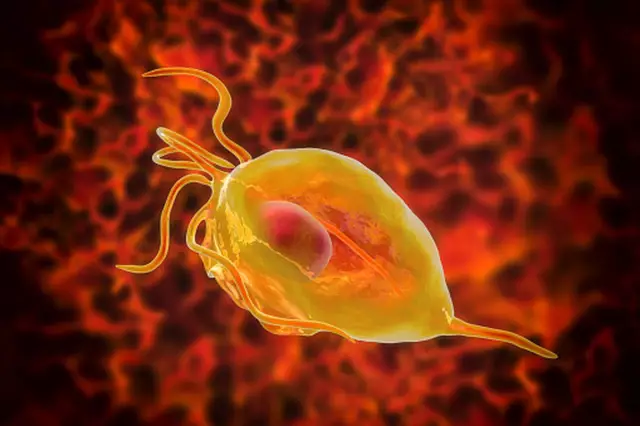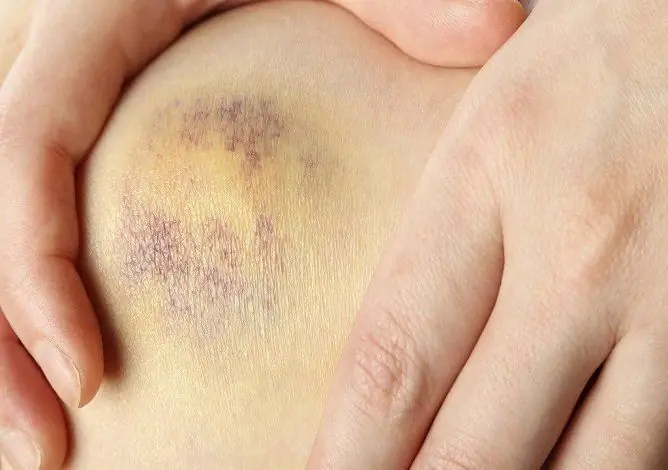- Author Rachel Wainwright [email protected].
- Public 2023-12-15 07:39.
- Last modified 2025-11-02 20:14.
Trichomoniasis
What you need to know about trichomoniasis?

Trichomoniasis is one of the most common sexually transmitted diseases. Previously, it was believed that this disease does not cause complications and can be easily cured with a couple of pills, but in recent years, doctors increasingly say that trichomoniasis in men and women is a major health problem. As the main evidence of this point of view, the results of numerous studies are cited, which have proven that trichomoniasis causes pelvic inflammatory diseases, infertility, post-trichomonas complications, and also leads to pathologies of newborns. This also includes an ectopic pregnancy, the signs of which are not always immediately detectable.
What is Trichomoniasis?
Trichomoniasis affects the organs of the human genitourinary system and is caused by a specific pathogen - Trichomonas vaginalis. It belongs to the group of protozoal infections and is characterized by the ability to persist for a long time inside the urogenital organs even under adverse conditions and the action of various drugs. In most cases, when a diagnosis of trichomoniasis is made, the symptoms indicate the development of severe forms of the disease. This is due to the following reasons:
- irrational treatment;
- late visit to the doctor;
- untimely formulation of the correct diagnosis;
- craving for self-medication and folk recipes.
How does Trichomonas enter the body, and what is the danger of trichomoniasis in women and men?
Trichomoniasis is primarily sexually transmitted. Intrauterine transmission is possible when the fetus (mainly girls) becomes infected with trichomoniasis through the mother's birth canal. It is possible to "catch" the infection even if basic hygiene rules are not observed, but such cases are extremely rare, which, however, does not diminish the importance of washing hands after using the toilet and the need to have separate towels for each family member.
We have already mentioned above that until recently both doctors and patients were extremely skeptical of trichomoniasis. This was expressed at least in the fact that in the diagnosis of trichomoniasis, treatment was carried out almost on the knee. Patients with trichomoniasis took a couple of pills and calmly continued to go about their business, not suspecting that an infection was developing in their body, quickly leading to anatomical and functional changes in the genitourinary system. In fairness, it should be noted that many people are generally unaware of their illness, since very often trichomoniasis in women and men is asymptomatic.
With trichomoniasis in men, the prostate gland is at greatest risk. Trichomonas cause prostatitis, lead to the formation of zones of active inflammation, provoke the development of cysts and stones. It comes to the point that trichomoniasis, the symptoms of which are often ignored by an infected person, progresses to prostate sclerosis. This complication prevents people from urinating calmly, let alone having sex, which is insanely painful. In addition to prostatitis, men can experience all the "beauty" of other serious consequences, including disruptions in the work of the seminal vesicles, accessory glands and organs of the scrotum.
However, trichomoniasis in women causes much more dramatic changes. Suffice it to say that with advanced forms, carriers of a "harmless" infection can easily end up on the surgical table, where doctors will have to remove the internal genital organs to save their lives. This often happens with the development of purulent inflammation in the pelvic organs. There are many factors that can activate latent trichomoniasis: symptoms in women appear after abortion, childbirth, the introduction of intrauterine contraceptives, diseases that reduce the effectiveness of the immune system.
The long course of trichomoniasis leads to infertility in both men and women.
Trichomoniasis symptoms
Trichomoniasis symptoms appear after 1 to 5 weeks. In women, trichomoniasis manifests itself:
- vaginal discharge (sometimes it smells unpleasant or has a characteristic yellow color);
- redness of the external genital organs and severe itching in the affected area;
- pain when urinating;
- severe pain during intercourse.
Trichomoniasis in men is almost asymptomatic. Sometimes the following symptoms of the disease appear:
- discharge from the urethra;
- pain during the act of urination;
- symptoms of prostatitis
Diagnosis of the disease
The main method for diagnosing trichomoniasis is the study of a general smear. In women, vaginal discharge is checked, in men, prostate secretion and discharge from the urethra are checked. Since symptoms are often absent in the diagnosis of trichomoniasis, more accurate laboratory methods are used to confirm the diagnosis - culture, PCR, PIF.
Treatment of trichomoniasis in women and men

The main course of treatment for trichomoniasis in men and women involves taking metronidazole (2 times a day for 7 days). This drug has many other commercial names: Klion, Medazol, Nycomed, Aquametro, Metronidazole-Teva, Trichopolum, Trichazol. Sometimes, for a faster recovery and prevention of possible complications, patients are assigned additional procedures: prostate massage, immunotherapy, physiotherapy, urethral instillation.
Once again, we note that when a diagnosis of trichomoniasis is made, treatment should be carried out only after consulting a specialist. Self-medication significantly increases the risk of complications that threaten the fulfillment of normal human needs and can lead to complete infertility.
Prevention of trichomoniasis
Prevention of trichomoniasis is reduced to the observance of the rules that prevent infection with sexually transmitted diseases. Key recommendations:
- use condoms;
- be attentive to the choice of partners;
- avoid casual sexual intercourse;
- do not use shared towels, washcloths and other hygiene items.
Please also note that trichomoniasis is easily transmitted during intercourse, therefore, if there is a suspicion of an infection, both partners should be examined at once.
YouTube video related to the article:
The information is generalized and provided for informational purposes only. At the first sign of illness, see your doctor. Self-medication is hazardous to health!






